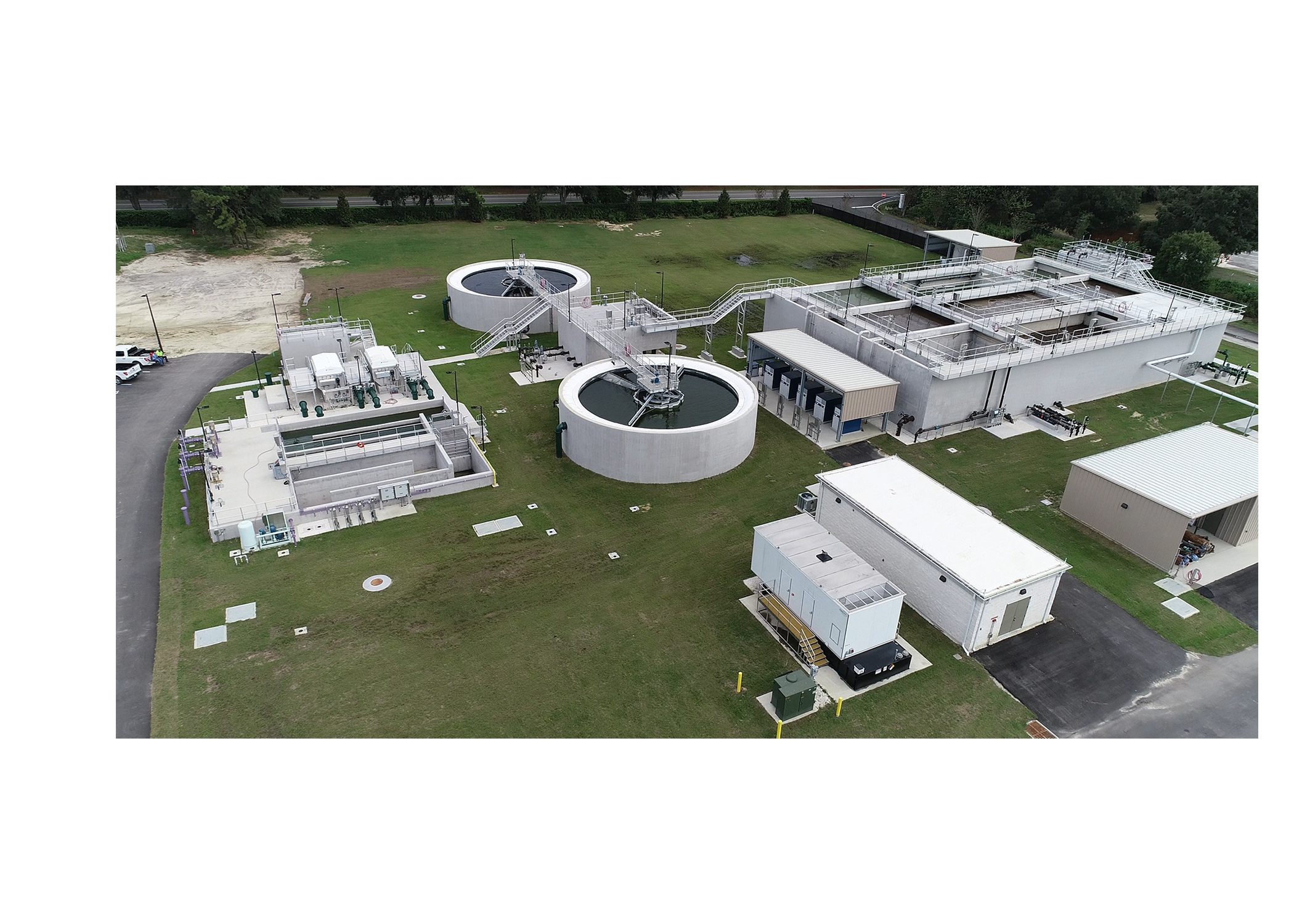Northwest Regional Wastewater Treatment Facility Expansion, Marion County Utility Department
Ocala, FL
Ardurra designed a cost-effective expansion to an existing WWTF to support existing and future growth in the Marion County service area. The facility is capable of meeting very stringent water quality limits and has the capacity to meet future demands. Provisions for future expansion were incorporated in the design of the facility, so it can be expanded (additional bioreactors and clarifier) up to 3 mgd AADF of capacity.
The existing Northwest Regional WWTF was originally constructed in 2005 and the facility includes an influent pump station, influent screening, flow equalization, aerated activated sludge process for organic removal, secondary clarification, filtration, and chlorination for disinfection. Expansion of the facility was required to provide additional treatment capacity to accommodate the wastewater flows in the growing service area.
The expansion of the facility converted the existing extended aeration process to an advanced wastewater treatment system. The Northwest Regional WWTF is designed to treat an annual average daily flow of up to 1.5 million gallons per day (mgd) and has the ability to expand to 3.0 mgd, to accommodate future growth in the area.
This advanced wastewater treatment facility includes a new headworks structure with rotary drum screens, influent flow splitter structure, new biological treatment process using a 4-stage Bardenpho process, blower and process air upgrades, secondary clarifiers, RAS/WAS pumping system, disc filters, and chlorine contact basins for wastewater treatment. Biosolids management will consist of aerated sludge holding, sludge pumping, and a facility to utilize a trailer-mounted centrifuge for dewatering and a truck loading conveyor system.
The electrical distribution system for the existing facility is 480V, 3-phase, 60 hz provided by a pad-mounted utility transformer. Standby power is provided by a diesel engine standby generator, with a transfer switch installed for switching between utility and standby power. A new electrical system with dedicated utility service and standby diesel engine generator was designed by Ardurra as part of the expansion project. The proposed electrical system design provides Class I reliability to ensure that no single fault or loss of power can disable more than half of the facility. New motor control center components were added to the existing electrical room to provide power to a future high service pump station.
The instrumentation and control (I&C) system for the expansion was upgraded to proven techniques that will provide maximum reliability and availability of the I&C system to ensure continued operation of the plant processes. Upgrades include providing surge protection of all field instruments and control system components together with fiber optic communication links between control system equipment at different locations within the plant. The I&C system was designed to minimize failures due to lightning and power surges.
The existing triplex influent pump station consists of two submersible non-clog wastewater pumps that pump raw wastewater to the headworks. Since its original construction in 2005, the influent pump station has experienced significant corrosion due to elevated hydrogen sulfide levels in the wetwell. During the design, Ardurra evaluated the existing influent pump station to determine pump station design capacity and upgrades required as part of the project.
Marion County performed structural rehabilitation of the existing influent pump station that included concrete and crack repair, application of corrosion-resistant coatings and painting, replacement of all mechanical piping, valves and fittings, and bypass pumping during construction to maintain plant operations. The existing influent piping was retrofitted with drops and submersible pump spacing was adjusted to be in accordance with the latest Marion County and Hydraulic Institute standards.
Ardurra performed a structural evaluation to repurpose the existing extended aeration basins into a reclaimed water storage tank. The recommendations included necessary repairs to wall cracks, spalling of concrete at anchor bolts/foundations, and sawcut repairs where walls were to be removed or modified.
The expansion included discharge of reclaimed water to the existing reclaimed water pond. The pond water level elevation served as the starting point for the hydraulic profile that was revised to accommodate the expansion.
Environmental Permitting
Permitting services included Florida Department of Environmental Protection (FDEP) Domestic Wastewater Facility permit, FDEP Environmental Resource Permit , and FDEP permit renewal for the existing wastewater treatment facility. The permit renewal included an operation and maintenance performance report and capacity analysis report. The capacity analysis report provided an evaluation of the existing service area and WWTF and future flow projections based on planned growth in the area.
Environmental assessment services were performed on the project to determine the possible presence of endangered species and identify other important ecological conditions. The environmental assessment discovered gopher tortoise burrows on the project site, a survey was conducted, and mitigation procedures were provided. An archaeological study was also performed to identify archeological sites, historic structures, and other cultural resources in the project area.




